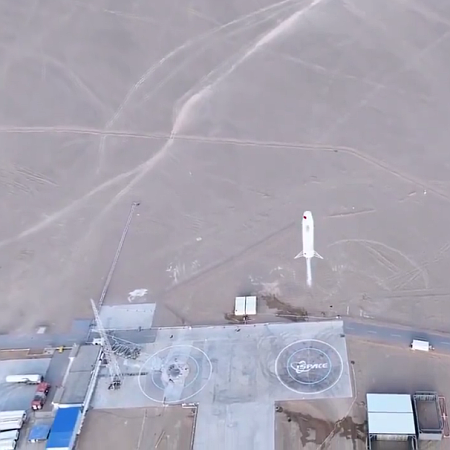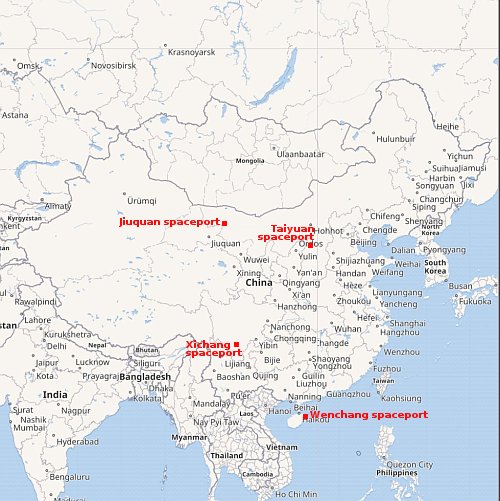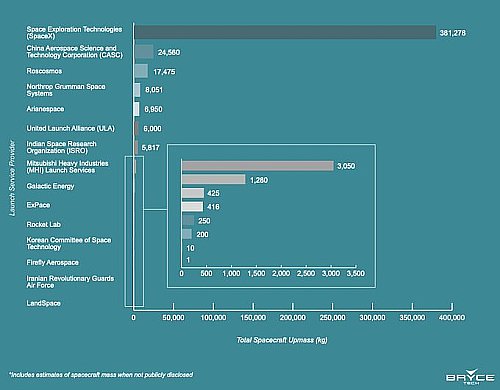White House issues “policy framework” to lobby for its space regulatory proposal
Faced with stiff opposition from industry and politicians from both parties in Congress to its regulatory proposal issued in mid-November, the White House yesterday released what it called a “policy framework” for implementing that proposal.
You can read this policy framework here [pdf]. It is filled with high-sounding claims about its goal is to encourage private development and reduce red tape, but in the end it only adds more government entities to the entire bureaucracy that regulates commercial space. From the framework itself:
The Secretaries of Commerce and Transportation will co-lead a Private Sector Space Activities Interagency Steering Group in consultation with the Chairperson of the Federal Communications Commission (FCC), comprising representation from the Departments of Defense, Energy, Homeland Security, Interior, and State, the National Aeronautics and Space Administration (NASA), the Office of the Director of National Intelligence, the Office of Science and Technology Policy, and any other Federal entities with expertise or equities pertaining to private sector novel space activities, including relevant stakeholders from the Executive Office of the President. The Steering Group serves as a coordinating body to ensure that the U.S. Government oversight system is prepared to meet U.S. priorities while taking into consideration the competitiveness of U.S. industry now and into the future.
One of the criticisms of the White House proposal from mid-November was that it would split regulation between Commerce and Transportation, thus increasing the complexity for commerical companies. This steering group is clearly an effort to answer those complaints, but based on this proposal, it simply adds one more bureaucratic layer to the mix, making things even more complicated.
The framework also calls for the expansion of the government’s regulatory footprint on several fronts, such as controlling orbital debris, and achieved through “expanding existing, or establish new, federal advisory committees to account for all expanded space authorities in furtherance of this Framework and related legislative proposals.”
From the viewpoint of freedom, this entire proposal reads like a zombie end-of-the-world horror film, with bureaucratic zombies appearing endlessly from all directions, aimed at consuming any independent private company as quickly and as thoroughly as possible.
The original commercial space act proposal from Congress, that the Biden administration (and most Democrats) oppose but carries the endorsement of the private commercial space industry, was passed by its House committee, but still needs to be voted on by the full House, as well as the Senate. Because it remains in limbo, the White House has issued this framework, in the hope it can give its side the ammunition needed to defeat that bill and replace it with the White House’s.
Faced with stiff opposition from industry and politicians from both parties in Congress to its regulatory proposal issued in mid-November, the White House yesterday released what it called a “policy framework” for implementing that proposal.
You can read this policy framework here [pdf]. It is filled with high-sounding claims about its goal is to encourage private development and reduce red tape, but in the end it only adds more government entities to the entire bureaucracy that regulates commercial space. From the framework itself:
The Secretaries of Commerce and Transportation will co-lead a Private Sector Space Activities Interagency Steering Group in consultation with the Chairperson of the Federal Communications Commission (FCC), comprising representation from the Departments of Defense, Energy, Homeland Security, Interior, and State, the National Aeronautics and Space Administration (NASA), the Office of the Director of National Intelligence, the Office of Science and Technology Policy, and any other Federal entities with expertise or equities pertaining to private sector novel space activities, including relevant stakeholders from the Executive Office of the President. The Steering Group serves as a coordinating body to ensure that the U.S. Government oversight system is prepared to meet U.S. priorities while taking into consideration the competitiveness of U.S. industry now and into the future.
One of the criticisms of the White House proposal from mid-November was that it would split regulation between Commerce and Transportation, thus increasing the complexity for commerical companies. This steering group is clearly an effort to answer those complaints, but based on this proposal, it simply adds one more bureaucratic layer to the mix, making things even more complicated.
The framework also calls for the expansion of the government’s regulatory footprint on several fronts, such as controlling orbital debris, and achieved through “expanding existing, or establish new, federal advisory committees to account for all expanded space authorities in furtherance of this Framework and related legislative proposals.”
From the viewpoint of freedom, this entire proposal reads like a zombie end-of-the-world horror film, with bureaucratic zombies appearing endlessly from all directions, aimed at consuming any independent private company as quickly and as thoroughly as possible.
The original commercial space act proposal from Congress, that the Biden administration (and most Democrats) oppose but carries the endorsement of the private commercial space industry, was passed by its House committee, but still needs to be voted on by the full House, as well as the Senate. Because it remains in limbo, the White House has issued this framework, in the hope it can give its side the ammunition needed to defeat that bill and replace it with the White House’s.





